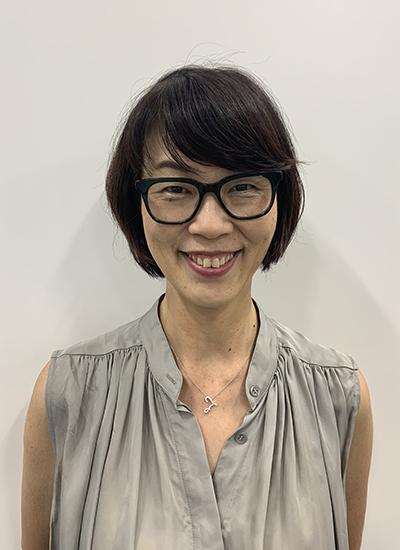Meet Three Boston Scientific Employees Committed to Protecting People From Stroke
Published 12-06-23
Submitted by Boston Scientific

Advancing science for life is at the core of all we do at Boston Scientific. Our products treat and prevent a broad range of conditions that can diminish a person’s quality of life, including stroke. Affecting more than 12 million people annually, stroke happens when blood flow to the brain is reduced or blocked, and can cause lasting, debilitating symptoms.
Meet three employees across the globe who have found their purpose in innovating and advancing products that help people lower their risk of stroke, whether during a medical procedure or daily life.
A constant reminder of the “why”
For senior research and development engineer Luis Lopez-de-Victoria, protecting patients is the reason he always puts his best foot forward at work. His focus area is the SENTINELTM Cerebral Protection System, a device that is used to protect patients against the risk of stroke during transcatheter aortic valve replacement heart (TAVR) procedures, an alternative to open-heart surgery.
“One of the ways a stroke can happen is during a TAVR procedure,” says Lopez-de-Victoria. “Embolic debris, such as valve tissue, can break loose and travel to the brain, which can block blood flow.” SENTINEL is designed to “catch” this debris before it travels to the brain.

After starting his career in the aerospace industry, Lopez-de-Victoria made the transition to Boston Scientific — and the health care field — almost three years ago and hasn’t looked back. “What inspires me most about the company are the people, and the mindset that we all share one common goal: putting the patient first,” he says.
Lopez-de-Victoria and his team in Maple Grove, Minnesota, specialize in sustainment engineering, which involves gathering feedback from customers and physicians so the team can continuously adapt SENTINEL to meet evolving unmet needs and help more patients.
Besides his interest in technology, Lopez-de-Victoria has a deeply personal motivator in his role. “My mom had a stroke a few years ago,” he says. “Thankfully, it was a minor one and she has since recovered, but it's a constant reminder of the ‘why’ behind our work. If I can help prevent one person — one family — from experiencing the effects of stroke, then that’s everything.”
Seeing the whole picture for stroke prevention
As a production director, Colm Sheils is focused on continuously improving processes and adapting them as the company develops new products.
Sheils and his team in Galway, Ireland, touch several technologies that help lower stroke risk, including the WATCHMANTM Left Atrial Appendage Closure (LAAC) device. It’s designed to lower stroke risk in patients with non-valvular atrial fibrillation (AFib), a condition in which the heart doesn’t pump blood normally, causing clots to form. When clots escape, they can cut off oxygen to the brain, causing a stroke.
“I think almost everyone knows someone who’s had a stroke, and so this job hits close to home,” says Sheils, who emphasizes the importance of employees seeing the whole picture when it comes to the technology they support. “For example, our product builders regularly engage in line tours not just of the area they are working in, but of the complete line to see how the whole product comes together — and most importantly, its impact for the patient,” he says.

A life-changing experience
While Lopez-de-Victoria and Sheils support the R&D and production of products that cut down on stroke risk, Tami Egawa’s focus is on educating physicians and patients about the latest, cutting-edge technologies available to them.
As a director of sales and education based in Japan, Egawa interacts with health care providers regularly to raise awareness of products like the WATCHMAN LAAC device, which was approved in Japan in 2019. In addition to lowering stroke risk, the WATCHMAN eliminates the need for anticoagulants which can have side effects — such as stomach bleeding — that can negatively affect a person’s quality of life.
“The ability to stop taking blood thinners and no longer worry about stroke matters a great deal to many patients in Japan,” says Egawa, noting that people of Asian descent suffer a higher risk of bleeding with anticoagulants compared with non-Asians. “I’ve spoken with people who were afraid to cook for their families for fear of cutting themselves, or who stopped wearing sleeveless shirts because of bruising on their arms from the blood thinners. The WATCHMAN is life-changing for these people, and I’m humbled to be able to play a small part in their journeys.”
To learn more about careers and apply for a job at Boston Scientific, visit our careers site.

Boston Scientific
Boston Scientific
Boston Scientific transforms lives through innovative medical technologies that improve the health of patients around the world. As a global medical technology leader for more than 40 years, we advance science for life by providing a broad range of high-performance solutions that address unmet patient needs and reduce the cost of health care. Our portfolio of devices and therapies helps physicians diagnose and treat complex cardiovascular, respiratory, digestive, oncological, neurological and urological diseases and conditions. Learn more at www.bostonscientific.com and connect on LinkedIn and X, formerly Twitter.
More from Boston Scientific

